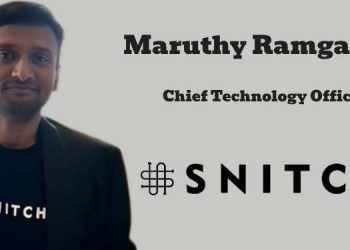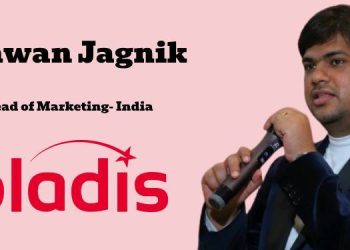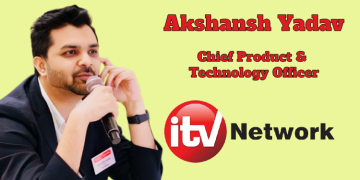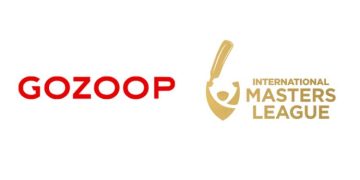The evolution of television advertising is witnessing a dramatic shift from traditional TV to Over-the-Top (OTT) and Connected TV (CTV) platforms. The transformation is fueled by data-driven insights, audience targeting, and real-time analytics that empower advertisers to engage consumers more effectively. Unlike linear TV, which relies on broad demographic-based targeting and traditional ratings like TRP (Television Rating Points), OTT and CTV campaigns utilize AI-driven personalization, interactive engagement, and precise attribution. This shift is not just about digital transformation; it is about redefining how brands connect with consumers in the modern age.
The Power of Data in OTT vs. Linear TV
Linear TV operates on predefined audience segments based on geography, age groups, and TRP ratings. The broad targeting approach lacks the ability to focus on specific consumer behaviors or interests. In contrast, OTT and CTV platforms use AI-powered algorithms to deliver hyper-targeted ads based on real-time viewing habits, interests, and past interactions.
For instance, a brand selling sports gear can target fitness enthusiasts who frequently watch workout videos on OTT platforms. This level of precision is unattainable with linear TV. Moreover, location-based targeting allows advertisers to personalize content based on regional preferences, making ads more relevant and impactful. The shift to data-driven advertising has enabled marketers to optimize campaigns efficiently, ensuring better conversion rates and engagement.
Real-Time Analytics: A Game Changer for Advertisers
One of the key differentiators between OTT and linear TV is the ability to measure performance in real-time. Traditional TV campaigns rely on estimated audience reach and TRP ratings, making it difficult to determine the exact effectiveness of an ad. Advertisers often wait weeks to analyze data, limiting the ability to make campaign adjustments quickly.
On the other hand, OTT platforms provide comprehensive real-time analytics, including impressions, click-through rates, watch time, engagement levels, and conversion tracking. Brands can optimize their campaigns mid-flight, tweaking messaging, visuals, or audience segmentation to enhance performance. For instance, Toyota utilized real-time analytics to fine-tune its YouTube ad campaigns for newly launched models, ensuring maximum audience resonance and engagement.
Maximizing ROI with OTT Campaigns
Linear TV advertisements require brands to purchase fixed ad slots, often during prime-time shows, at high costs. This investment is largely rigid, with little room for budget flexibility or performance-based adjustments. Once an ad is aired, modifications or optimizations become challenging and expensive.
Conversely, OTT advertising operates on a more flexible pricing model. Brands can allocate budgets dynamically, scaling spending based on ad performance. Programmatic buying and performance-based expenditure ensure that marketers only pay for impressions that truly matter. For example, F&B brands like Swiggy leverage YouTube’s skippable ads, ensuring they pay only for views exceeding a certain threshold. This flexibility enables brands to optimize ad spending effectively, making OTT a cost-efficient alternative.
Interactivity and Consumer Engagement
Linear TV remains a passive medium where viewers consume content without interaction. Advertisers rely on brand recall rather than direct engagement. In contrast, OTT and CTV ads offer interactive features such as clickable call-to-action buttons, QR codes, and interactive mini-games.
For example, during the IPL season, Coca-Cola ran an interactive campaign on Disney+ Hotstar that allowed users to participate in mini-games while watching the matches. This approach significantly boosted customer interaction, brand engagement, and recall value. Additionally, OTT platforms provide options like polls, surveys, and direct links to product pages, making it easier for consumers to act on their interests instantly.
Ad Skippability and Viewer Control
A major challenge with OTT advertising is ad skippability. Users often skip ads after the first few seconds, making it crucial for brands to create engaging, compelling content within that limited timeframe. Storytelling-driven ads and exclusive offers are some strategies brands use to retain viewer attention.
In contrast, linear TV ads are unskippable, forcing viewers to watch them fully. While this ensures complete ad exposure, it can also lead to disengagement and channel switching. The lack of control over content consumption makes traditional TV ads less appealing to modern viewers accustomed to on-demand, personalized experiences.
Attribution and Measuring Campaign Effectiveness
OTT and CTV platforms provide robust attribution models that allow marketers to track the customer journey from ad exposure to conversion. Advanced analytics help brands measure how many users visited a website, downloaded an app, or made a purchase after viewing an ad. For example, Unilever leverages YouTube’s audience insights to refine its digital campaigns, ensuring they reach the most relevant consumers.
Conversely, linear TV attribution is complex and often relies on indirect methods like brand recall surveys or overall sales trends. The inability to track individual consumer actions makes it challenging to attribute success to specific TV campaigns accurately.
Reach and Penetration in OTT vs. Linear TV
Despite the rise of OTT and CTV, linear TV continues to hold strong among older demographics and rural areas where digital adoption is slower. Traditional TV maintains a strong mass appeal, especially for major sporting events, reality shows, and prime-time news.
However, OTT is rapidly gaining engagement, particularly among younger, urban, and tech-savvy audiences. With increasing internet penetration, the OTT universe is expanding beyond metro cities into tier-2 and tier-3 markets. Live sports streaming, personalized content recommendations, and multilingual options further enhance its appeal. Advertisers looking to capture a younger demographic are increasingly prioritizing OTT over traditional TV.
The Future of Advertising: The Rise of AI and Automation
As AI-driven ad optimization continues to evolve, OTT and CTV advertising will further enhance targeting capabilities. Predictive analytics, automated campaign adjustments, and AI-powered content recommendations will refine the advertising ecosystem. The growth of smart TVs and streaming devices is accelerating this transformation, making OTT and CTV the dominant platforms for modern advertising.
While linear TV will continue to serve mass branding needs, the decline in ad revenues suggests a gradual shift toward data-driven, personalized ad strategies. Brands aiming for higher engagement, measurable impact, and cost-effective marketing solutions will increasingly turn to OTT campaigns as their preferred choice.
The transition from traditional TV to OTT campaigns signifies a data-centric and performance-driven approach to advertising. The ability to hyper-target audiences, analyze real-time metrics, drive interactive engagement, and accurately attribute conversions makes OTT the superior choice for advertisers. While linear TV remains relevant for broad audience reach, its limitations in targeting and measurement are paving the way for a digital-first advertising landscape. As AI and automation continue to refine campaign strategies, OTT and CTV will dominate the future of advertising, shaping how brands connect with consumers in a highly personalized and impactful manner.
(Views are personal)

















